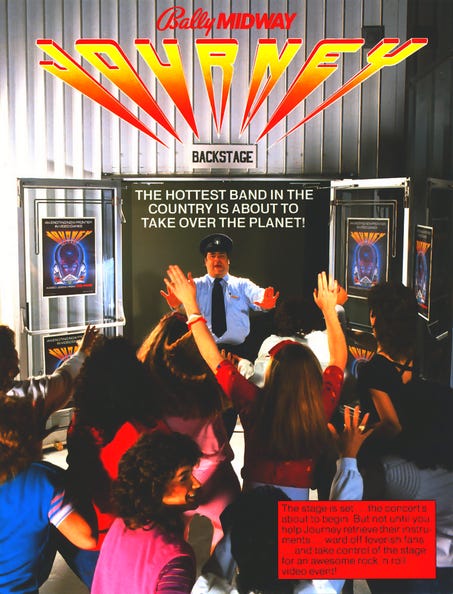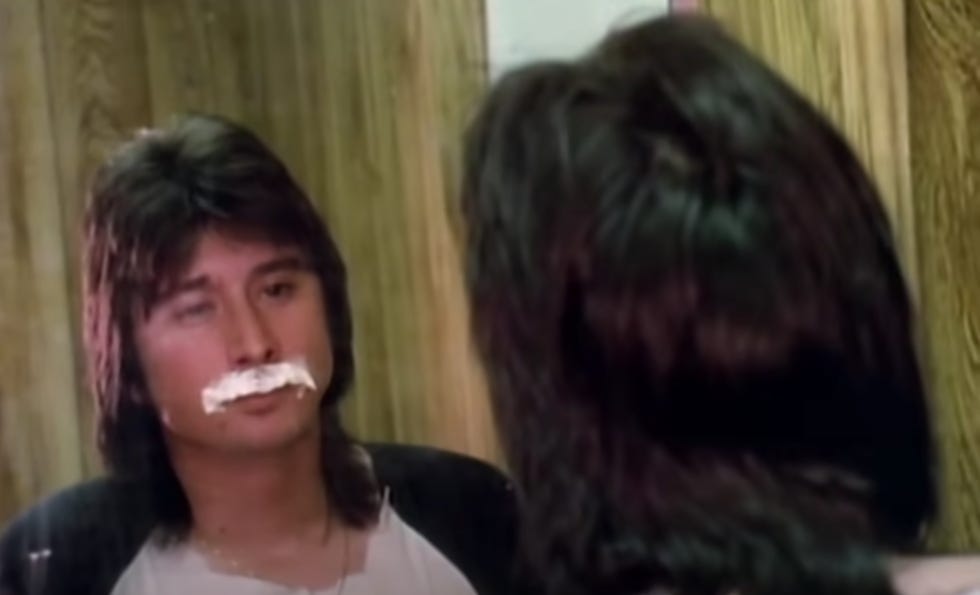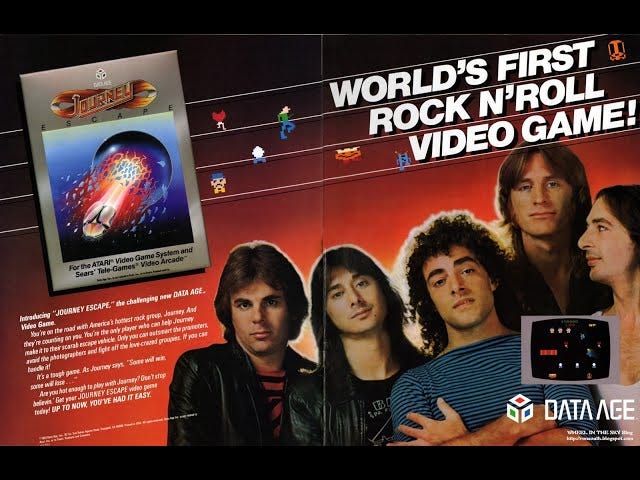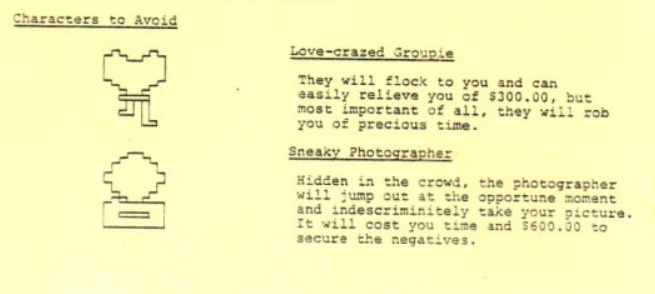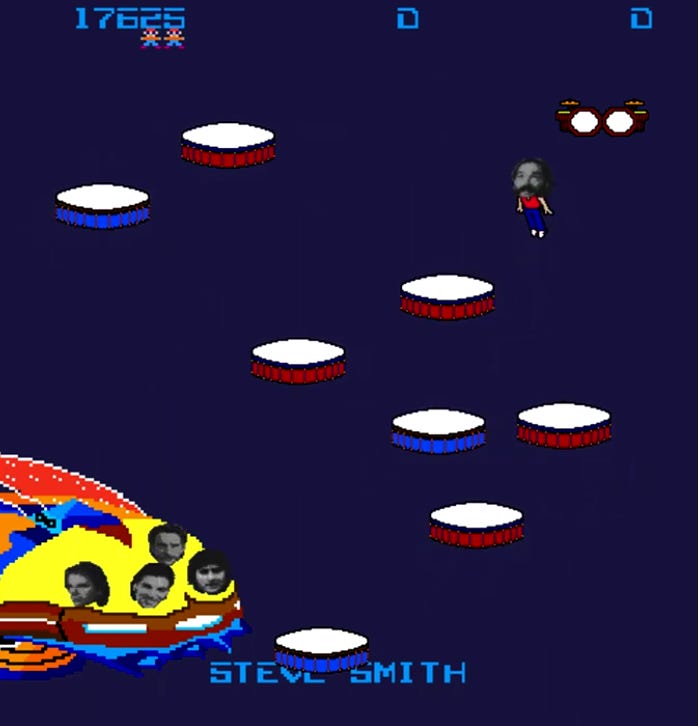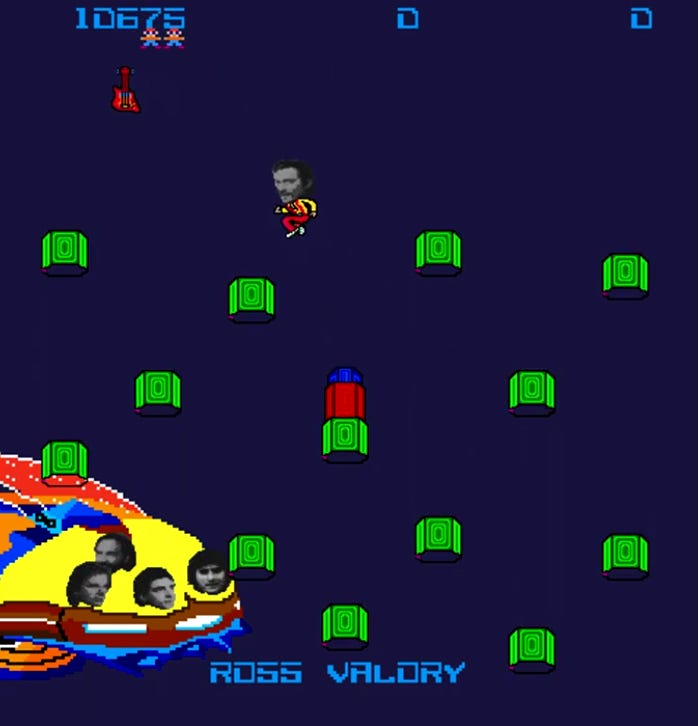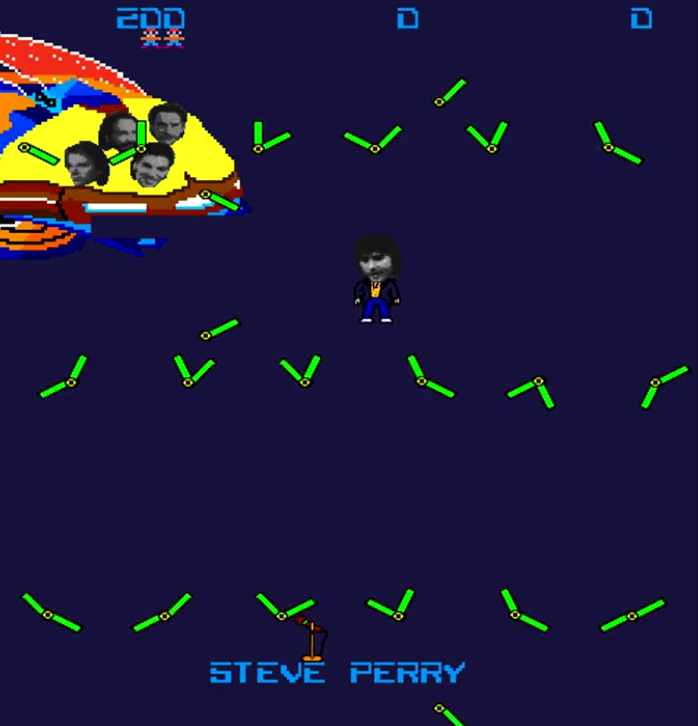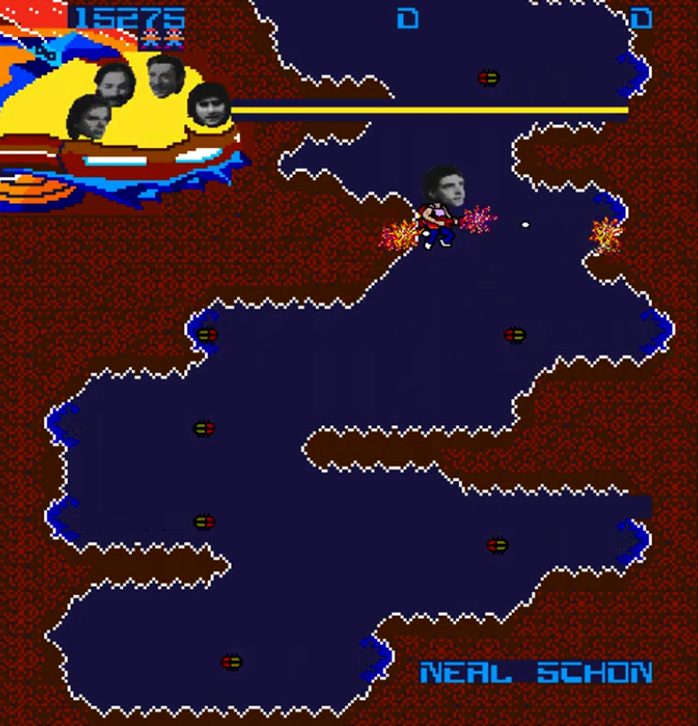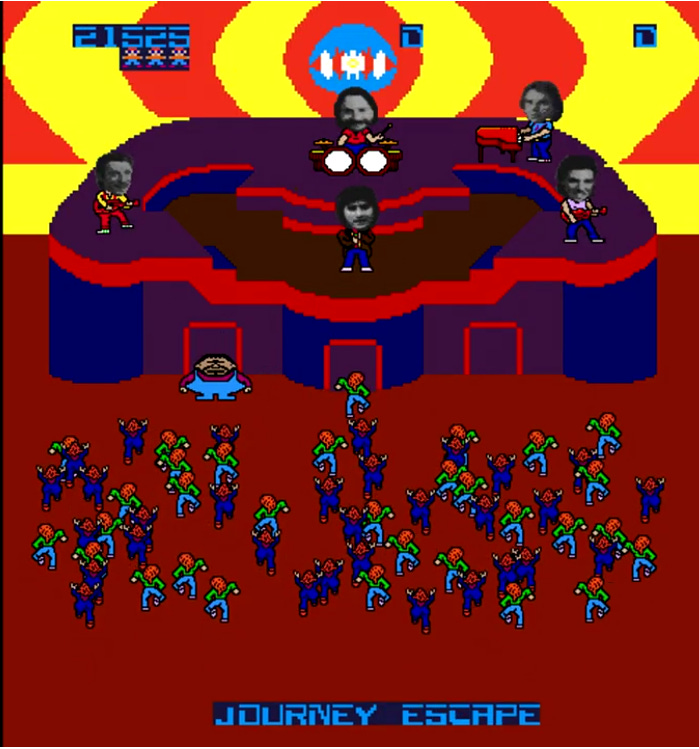40 Years Ago, Journey Was So Big They Got Their Own Video Game(s)
Released in 2012, the game Journey was a revelation. A minimal indie that saw players exploring a strange world with little to no indication of who or where they were, it packed an emotional punch thanks to a clever twist I wouldn’t dare spoil here. The modest game bumped elbows with major releases, and even took home some Game of the Year awards.
I’m not talking about that game today, though. No, I’m gonna talk about the two games based on the rock group Journey that came out in the early ‘80s. Those games packed no emotional punches and won zero awards, but if you’re looking for titles with digitized versions of Journey songs that task you with running away from love-crazed groupies—well, I think you might be surprised by which titles hold up better.
I’ve always had a bit of a soft spot for Journey. I'm aware that their pretentious, stadium-ready brand of rock was the exact sort of thing that many of my favorite punk bands were lashing out against, but I can’t help it. I’m a complicated person.
My friend Jeff and I used to have a Journey DVD that contained a bunch of their videos, and we’d always throw it on for a laugh when we had people over. Was it an ironic enjoyment? I don’t know, sort of. The videos are completely ridiculous, but you know what? I sincerely like a lot of their songs. So, it’s a bit of both. I don’t care.
For example, I think “Faithfully” is a pretty good ballad, able to tug on one or two of my heartstrings if it catches me on the right day, as Steve Perry tunefully and achingly sings about the empty side of life on the road.
But also, there’s a shot in the video in which Perry, having covered his mustache in shaving cream, thinks long and hard about shaving it. It’s hilarious and undoes the previous two minutes’ worth of contemplative lyrics and forlorn footage of life on the road. Was this guy singing about a mustache the whole time?
That’s what I like about Journey. The commitment to their sincere brand of cheesy rock is commendable, and beneath the surface, there is a lot of fun to be had, you just have to supply it yourself. They’re too busy singing their hearts out about a big wheel in the sky or some shit. I don’t know.
Before they supplied the best needle drop in television history, Journey also crossed over into video games a few times, while both the band and the medium were peaking. Within two years, an arcade game, Journey, and a game for home consoles, Journey Escape, were released.
1982 saw Journey Escape, named after the Escape album that would be the band’s biggest, released for the Atari 2600. It doesn't make a lot of sense. You run around and stuff goes whizzing by you, some good, some bad. Luckily, the instruction manual provides some helpful information, like what the band’s groupies and rogue photographers look like.
Journey Escape is incomprehensible—a bunch of levitating graphics that threaten to become a game, but never quite do. Maybe I’m showing my ass here, but as much as I appreciate old video games, a lot of this old Atari stuff just feels floaty and unfinished to me. Honestly, skip the game and watch this commercial, which provides infinitely more entertainment and contains absolutely no sound mixing.
The Journey arcade game provides a fuller experience. By that I mean you get to control each member of the band in their own level, each featuring a different Journey song! While it’s impossible to imagine people choosing this game over Dragon’s Lair and Elevator Action, I assume it would have outgrossed any Hall & Oates or J Geils Band arcade game, had they existed.
The game starts with a nice rendition of “Lights” playing, while all five band members board their scarab/UFO/spaceship/van thing. From there, players choose one of five minigames—each starring a member of the band trying to get their hands on their instruments, and then slaying some enemies with their rocking afterwards. The whole affair feels like one of those shitty Simpsons games that were a hodgepodge of underwhelming minigames, with a few highlights along the way.
So as not to be too negative, I will mention the few things I really liked about this game. The soundtrack is a blast, of course. I dug the art style, too. It looks like South Park now, but I think the cut-and-paste graphics were a fun way to portray the band on early arcade hardware.
This is a minor detail, but I also really like that the rest of the band watches on from the UFO when you play a level. The whole thing doesn’t feel like some life-or-death affair, just the guys in Journey hangin’ out and rooting each other on. Good vibes. Sadly, the games themselves are kind of clunkers. A quick rundown:
Steve Smith - Drummer
(Song: “Wheel in the Sky”)
Steve’s on a bad acid trip and bouncing around on a bunch of drums like they’re trampolines. The goal is to jump off of each drum once. Drums disappear after being struck twice, so timing and quick strategy come into play here. This is easily one of the better games, and I prefer the floaty jumping bits to the stiffer platform-type stuff.
After you successfully touch each drum, you get behind the kid and avoid waves of enemies in an appropriate timing-based game. Gambling on whether you have a window of time long enough to dash across the finish line is a pleasant surprise in a silly-ass Journey game. Steve Smith might have been the least popular Steve in the group, but his game might be the best one here, complete with the best song on the soundtrack.
Ross Valory - Bass
(Song: “Keep on Runnin’”)
A weird timing/jumping game gives way to a hectic Space Invaders-type free-for-all in one of the less inspired minigames. Appropriately, the song “Keep on Runnin’” was never released as a single, and is a pretty forgettable Journey tune. As far as I can tell, it’s Steve Perry singing about how much he wants to run on a Friday night. That guy had so much energy. A lot of rock stars were into booze, pills, and cocaine. Steve Perry just got excited and ran around.
Sorry, Ross, I ended up talking about the singer. I bet bass players hate that.
Steve Perry - Vocals
(Song: “Don’t Stop Believin’”)
Speaking of Steve Perry, in his game, you must guide the vocalist through a series of glowing gates to retrieve his microphone. Once you do, the damn thing becomes a blaster, and Steve’s gotta fire his way back to the top of the screen as enemies descend upon you.
It’s like Centipede, if you were trying to advance to the top of the screen, and “Don’t Stop Believin’” was playing the whole time.
Jonathan Cain - Keyboard
(Song: “Stone in Love”)
Johnny’s gotta run down some slanted platforms to get to his keyboard at the bottom of the screen. It’s essentially an inverted Donkey Kong. I don’t have the dates and research to prove it, but I think a lot of this game’s ideas came down to twists on pre-existing games. Ah, well. It’s rock and roll—everyone steals from everyone.
Neal Schon - Guitar
(Song: “Chain Reaction”)
While everyone else is running and jumping, Neal’s guitar is stuck at the bottom of a fucking cave and he’s got to use his jet pack to get down there and fetch it. On the way back up, enemies start shooting at you. The song choice is boring, but the propulsion controls are actually quite solid and have a great feel to them.
After you reunite the band with their gear, a hilarious ending game sees you working as a sloppy security guard during a Journey concert. Mind three doors at once, Tapper-style, to make sure the band's ravenous fans don’t get into the little doors at the bottom of the stage. Because if they do, the fans mob Journey, steal their instruments, and force them to scatter, starting the game over at a higher difficulty.
While many arcade games of this era lack a definitive ending, the endless loop feels like an apt metaphor for what life in Journey must have felt like in 1983, eight albums in, and just a few years from the implosion of their original lineup and a decade-long hiatus.
Journey the Band the Arcade Game isn’t earth-shattering, but I think it extends beyond being merely a novelty, and is a cool half-game/half-celebration of Journey. I wouldn’t hate it if there were more games like this for me to discover. Not about Journey necessarily, but video games geared around other bands, and not in a Guitar Hero way.
There are a couple more that I can think of. There was Revolution X, a dystopian Aerosmith game that’s too weird for me not to cover someday. And later this week, for paid Skitching the Elephant subscribers, I’ll pay tribute to the video game that introduced me to GWAR: a band that you would never confuse for Journey, but who may be just as theatrical.
Until then, don’t stop be-
Don’t forget, the first piece of Skitching the Elephant merchandise is now available!



